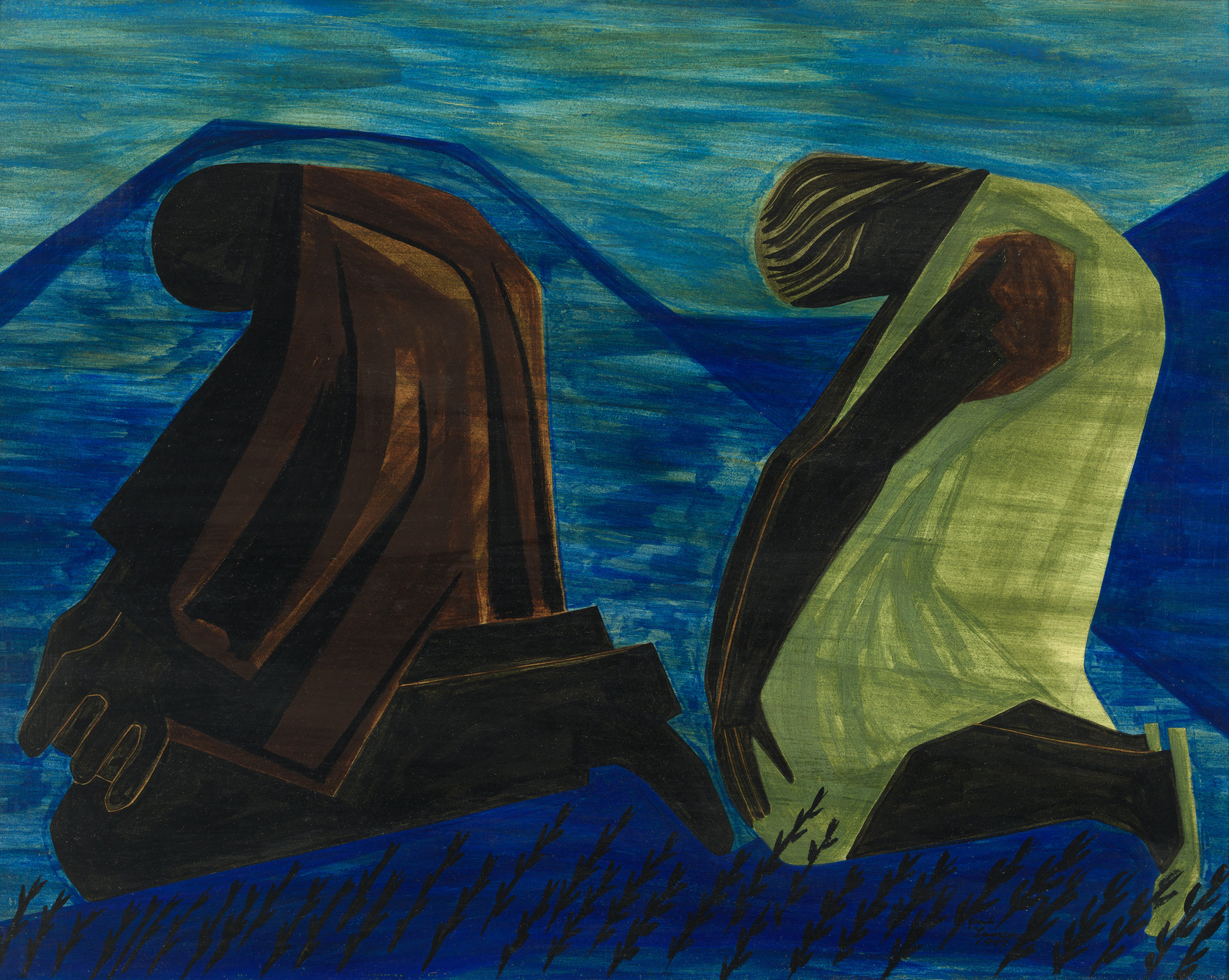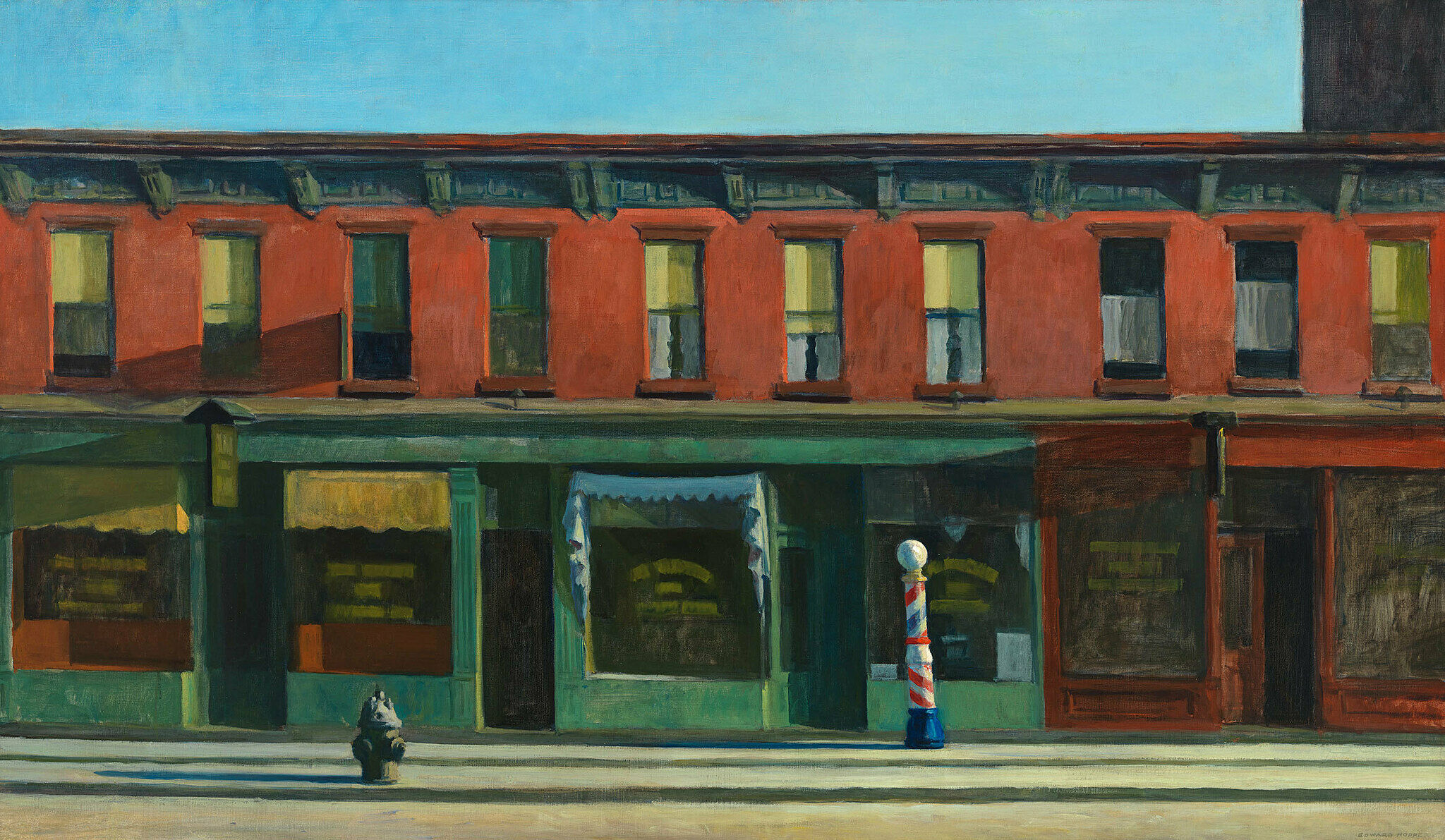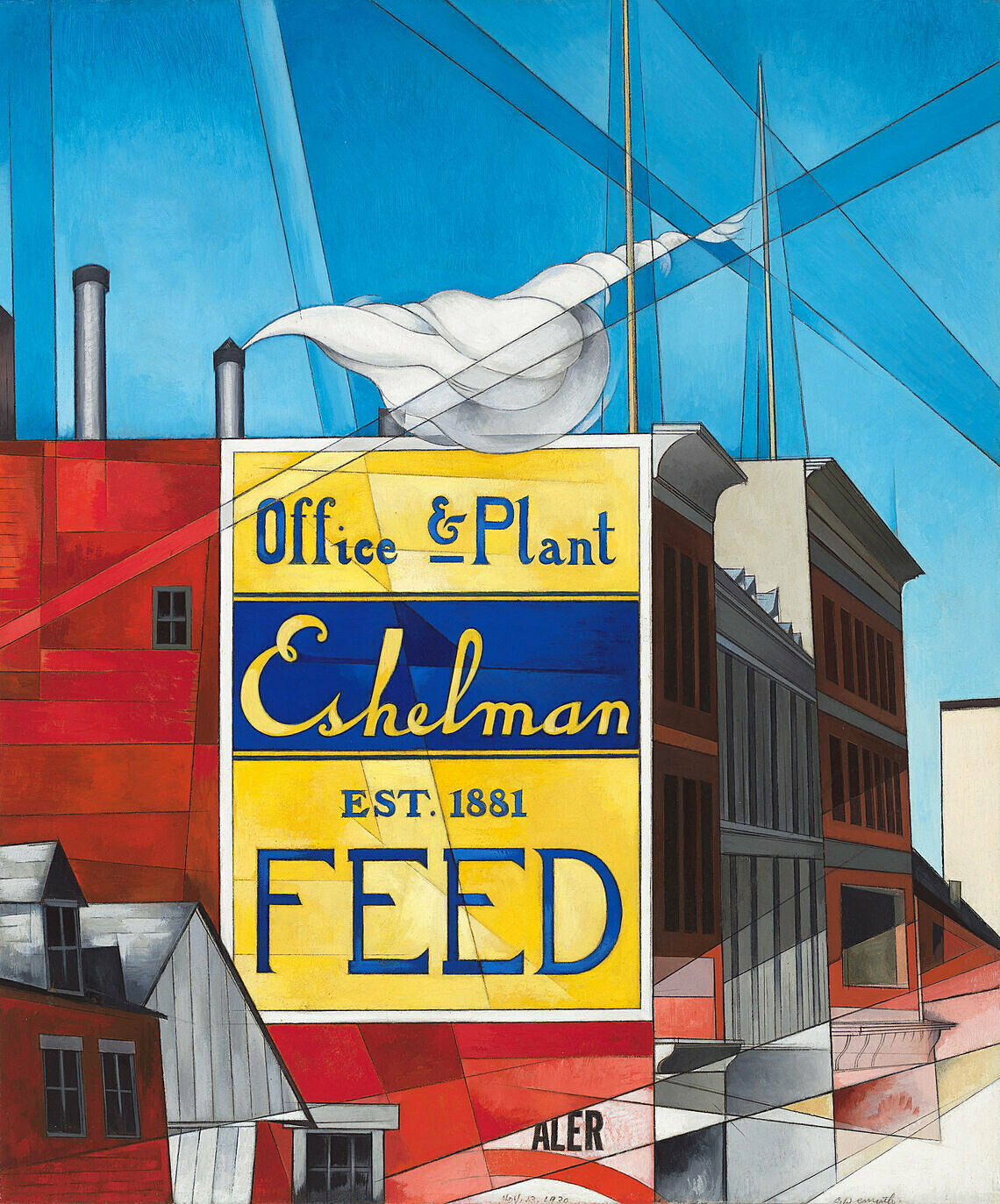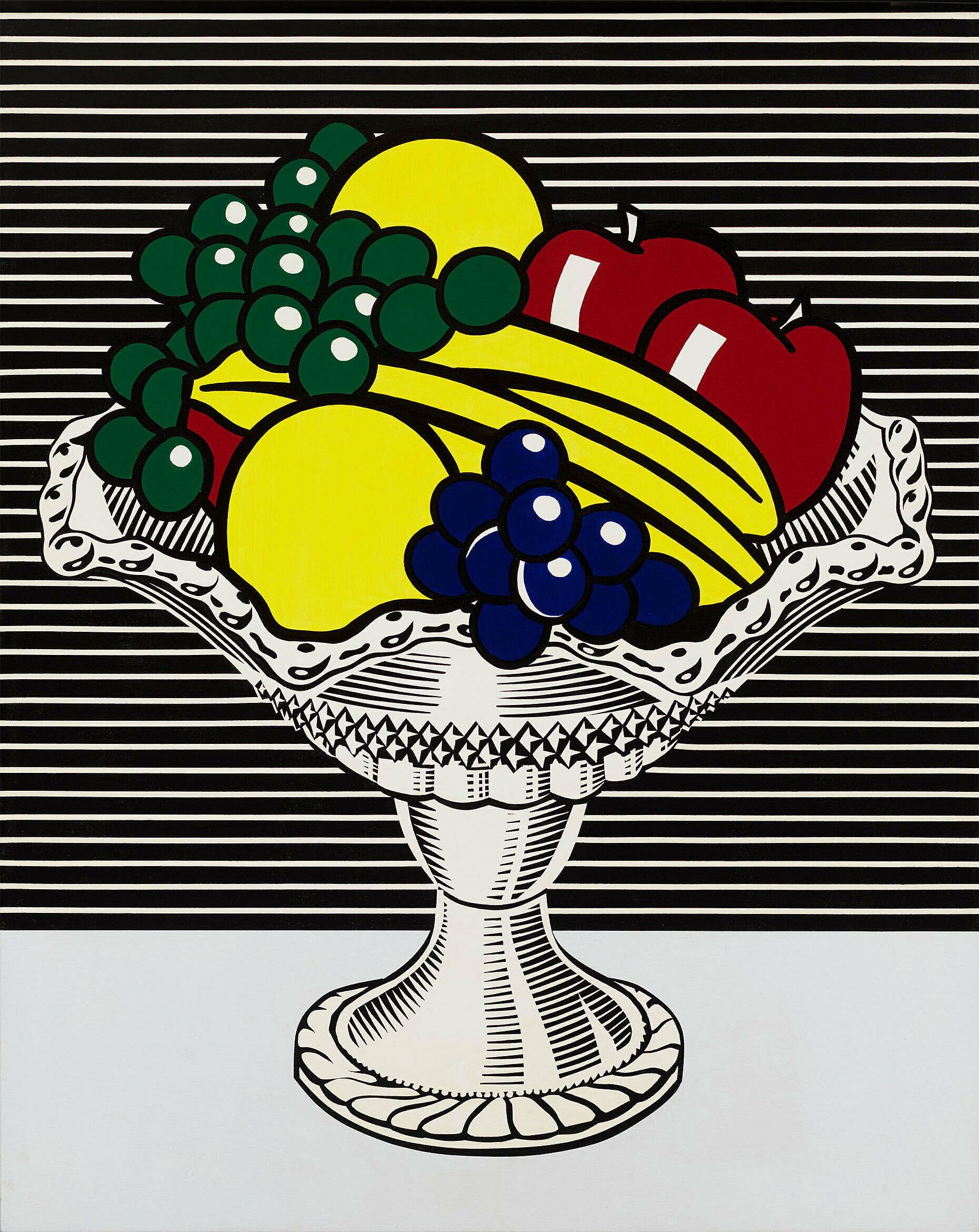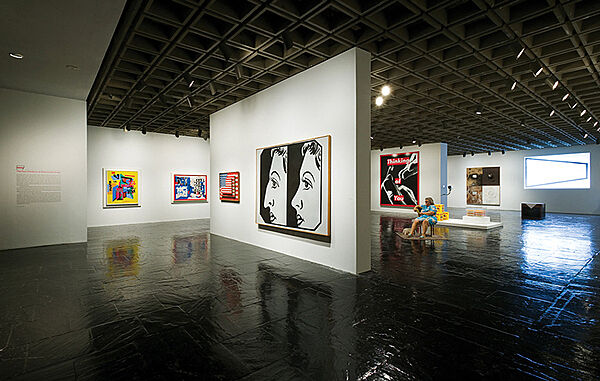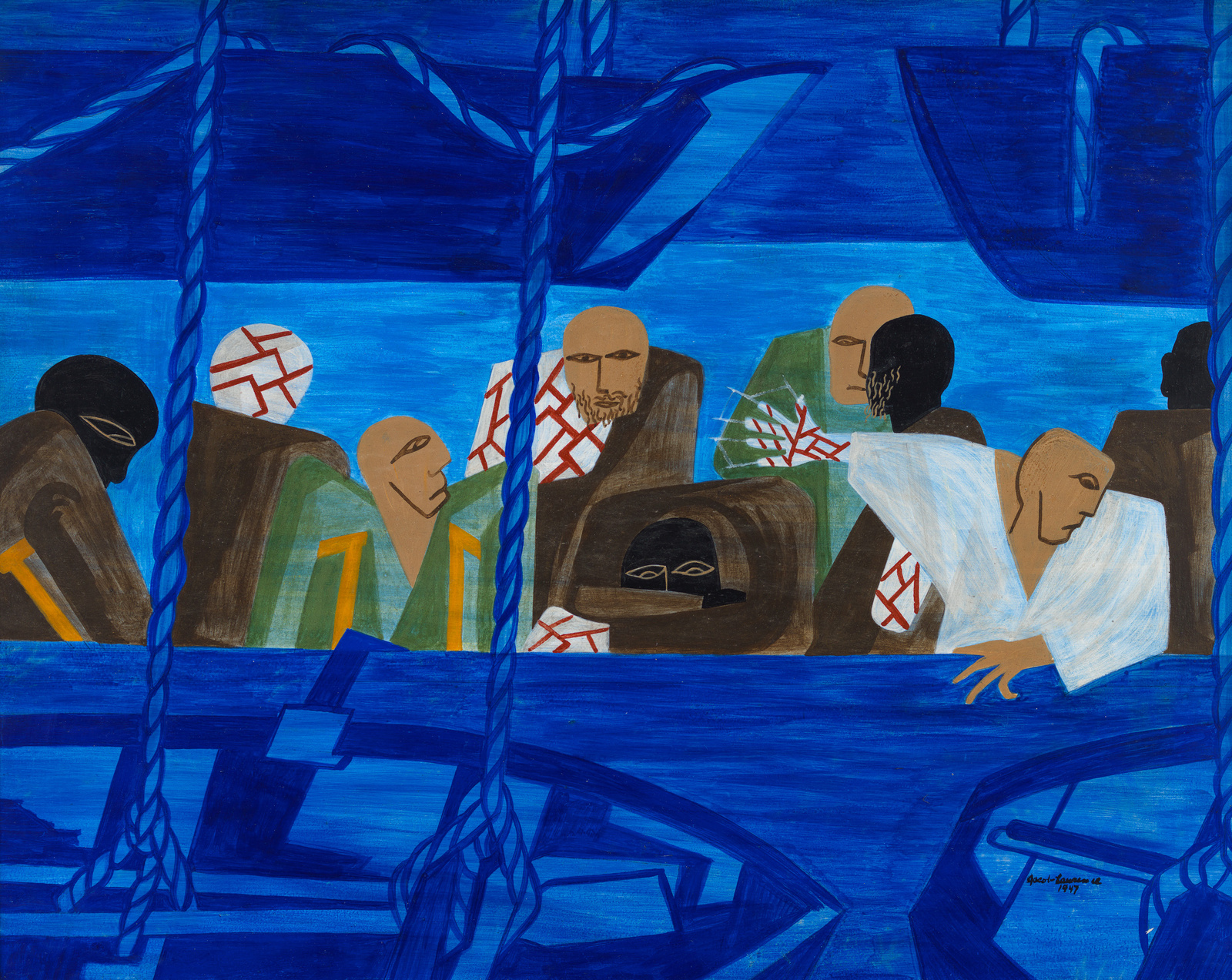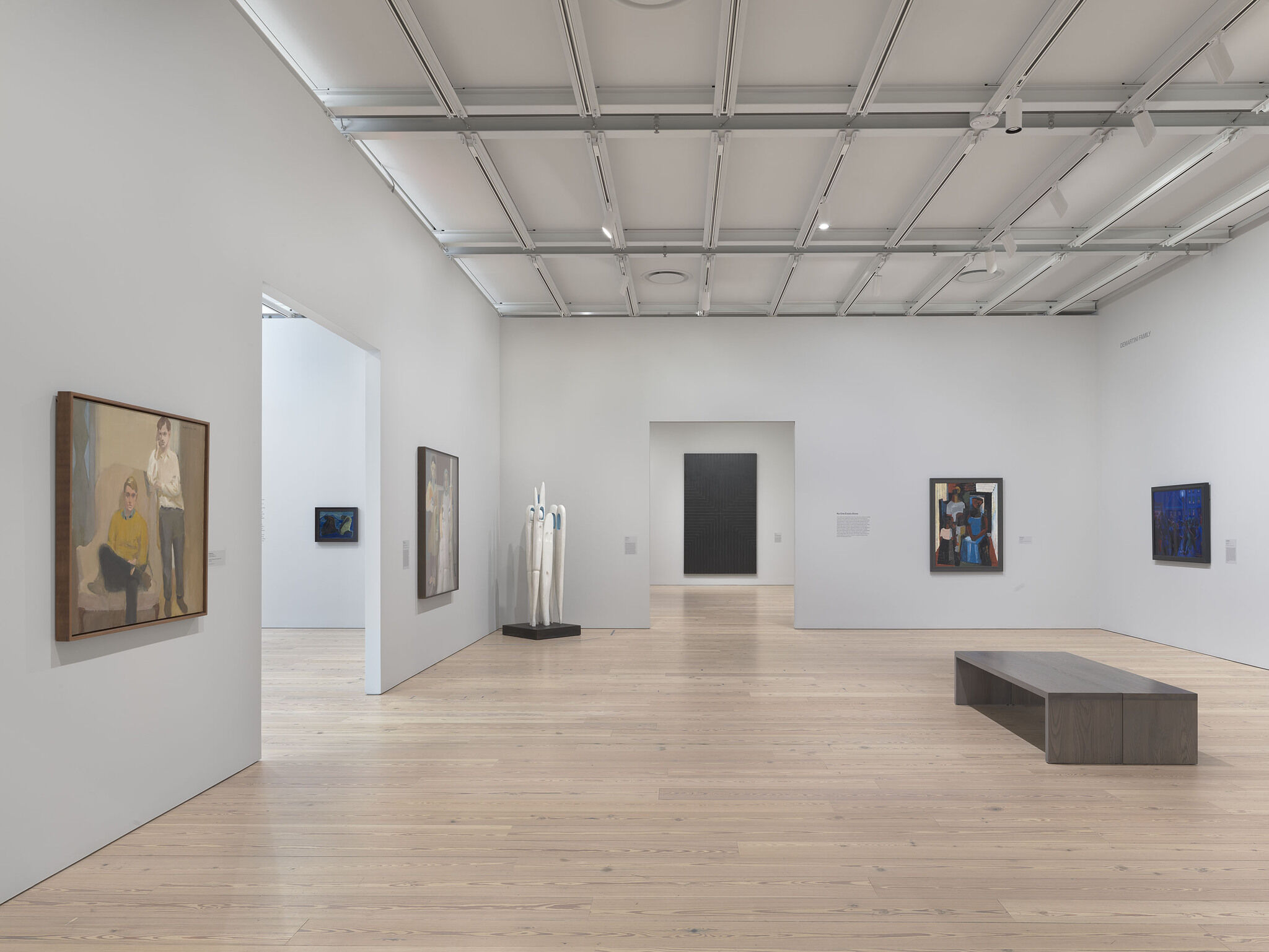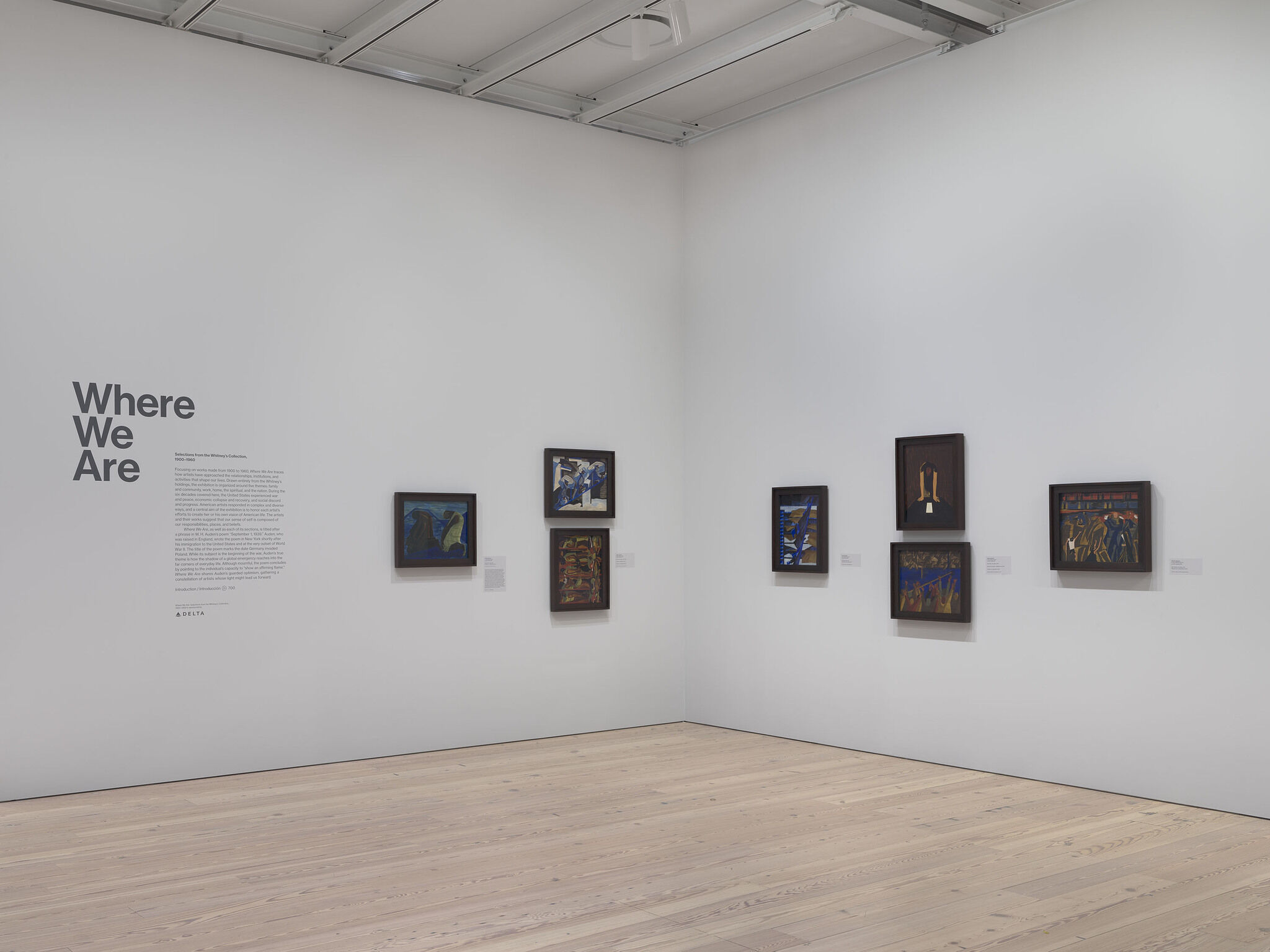Jacob Lawrence’s War Series describes first-hand the sense of regimentation, community, and displacement that the artist experienced during his service in the United States Coast Guard during World War II. Lawrence served his first year in St. Augustine, Florida, in a racially segregated regiment where he was first given the rank of Steward’s Mate, the only one available to black Americans at the time. He befriended a commander who shared his interest in art, however, and he went on to serve in an integrated regiment as Coast Guard Artist, documenting the war in Italy, England, Egypt, and India. Those works are lost, but in 1946 he received a Guggenheim Fellowship to paint the War Series. The fourteen panels of the series present a narrative which progresses from Shipping Out to Victory. In the panels, Lawrence adopted the silhouetted figures, prominent eyes, and simplified, overlapping profiles that are typical of Egyptian wall painting. And like the ancient painters, he transformed groups of figures into surface patterns, eschewing modeling and perspective in favor of the immediacy of bold, abstracted forms. In their alternation between vertical and horizontal formats, single figures and groups, and intense action and contemplation, the fourteen panels of the War Series testify to Lawrence’s belief that one cannot “tell a story in a single painting.”
Not on view
Date
1947
Classification
Paintings
Medium
Tempera on composition board
Dimensions
Overall: 16 1/8 × 20 1/4in. (41 × 51.4 cm) Image: 15 7/8 × 20 1/16 × 1/8in. (40.3 × 51 × 0.3 cm)
Accession number
51.6
Series
War Series
Credit line
Whitney Museum of American Art, New York; gift of Mr. and Mrs. Roy R. Neuberger
Rights and reproductions
© The Jacob and Gwendolyn Lawrence Foundation, Seattle / Artists Rights Society (ARS), New York

